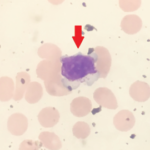Osteoporosis results in more than 700,000 vertebral fractures annually in the United States that, in turn, lead to 115,000 annual hospital admissions. They represent over 50% of all osteoporotic fractures and have an incidence roughly twice that of hip fractures.1
Many vertebral fractures are asymptomatic but are still associated with increased morbidity and mortality. Approximately 25–30% of these vertebral fractures are associated with a great deal of pain.
“About two in three people with an acute compression fracture of the vertebra will do well with conservative care such as braces, pain medications, and bed rest,” says Matthew Smuck, MD, assistant professor of physical medicine and rehabilitation at the University of Michigan in Ann Arbor. “Over time, the pain improves and there are few long-term deficits to contend with. There is, however, that last third that may have exquisite pain or have contraindications for bed rest or the use of pain medications, especially potent narcotics.”
Two Options Available in U.S.
For these patients, percutaneous vertebral augmentation (PVA) should be considered a viable alternative. There are two forms of PVA approved for use in the United States.
Vertebroplasty has been performed in the United States since 1995. In this procedure, polymethylmethacylate (PMMA) is introduced into the fractured vertebral body through a large needle. The PMMA stabilizes the fracture and improves pain.
The second option is known as balloon kyphoplasty (BK). A balloon tamp is inserted into the vertebral body to compress the bone, create a cavity, and attempt to realign the endplates. After removing the tamp, cement is injected to fix and stabilize the fractured vertebral body.
Indications for the use of PVA include a painful osteoporotic fracture that has not responded to conservative medical therapy for at least two weeks, compression fractures related to benign or malignant tumors, osteonecrosis, and structural reinforcement prior to surgical stabilization. These procedures should be performed with caution in those with an unstable fracture with movement, as these tend to be associated with more frequent PMMA leakage.
The guidelines suggest the appropriate person for [PVA] should have had a vertebral fracture with pain that has not resolved with at least two weeks of conservative treatment.
—Robin Dore, MD
Absolute contraindications to the procedure include an asymptomatic stable fracture, osteomyelitis of target vertebra, uncorrected coagulation disorders, acute traumatic fracture of non-osteoporotic or nonmalignant vertebra, an allergy to any of the components, and local or systemic infections. Relative contraindications include pain caused by a compressive syndrome unrelated to vertebral body collapse, fragment with more than 20% spinal canal compromise, tumor extension into epidural space, or severe vertebral body collapse (vertebra plana).


